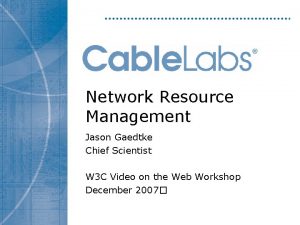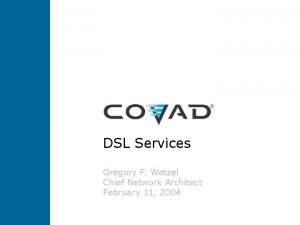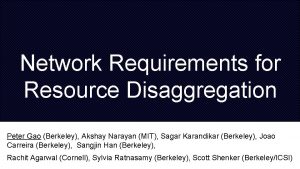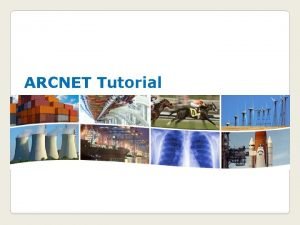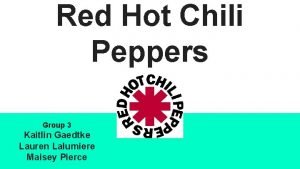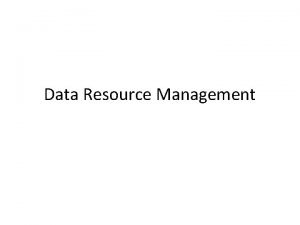Network Resource Management Jason Gaedtke Chief Scientist W










- Slides: 10

Network Resource Management Jason Gaedtke Chief Scientist W 3 C Video on the Web Workshop December 2007�

Topics • Abstract § Compelling network neutrality arguments notwithstanding, not all IP traffic exhibits uniform distribution requirements (e. g. , bandwidth, latency, jitter and TTL). § Further, automated P 2 P file-sharing agents exploit TCP congestion control algorithms to gain a disproportionate share of network resources. § Some measures should be explored to address this natural, shared-network heterogeneity. • • • Heterogeneous Applications and Network Requirements Web Video Distribution Trends A Resource Consumption Example (Briscoe Draft) Potential Management Strategies References and Collaborative Activities January 12, 2006 © Cable Television Laboratories, Inc. 2007. All Rights Reserved. Proprietary/Confidential 2

Heterogeneous Apps and Network Reqs • Real-Time Apps: dependent upon low-latency delivery, exhibit highly-variable bandwidth requirements, few simultaneous connections § § Online gaming Vo. IP and video chat IM and Presence Streaming video • Interactive Services: tolerant of modest delivery delays, modest bandwidth, few simultaneous connections § E-mail § Web browsing § Progressive download • Content Distribution: automated, many simultaneous connections, greedy – will consume available bandwidth § P 2 P file-sharing § File/mail/news/Web servers January 12, 2006 © Cable Television Laboratories, Inc. 2007. All Rights Reserved. Proprietary/Confidential 3

Web Video Distribution (Background) • Web Servers/Farms § Simple client/server architecture § Commodity servers, scaled horizontally – Capacity – Redundancy/Availability • Content Distribution Networks (CDNs) § Specialized client/server architecture with aggressive caching § Geographical distribution and load-balancing • P 2 P Networks § Decentralized, distributed and self-organizing § “Super-nodes” avoid n 2 link scaling and search § Participants contribute bandwidth, storage and processing • Hybrid CDN/P 2 P Networks § Benefits of P 2 P resource sharing; <10% distro costs § Seed and “long-tail” content sourced via CDN caches January 12, 2006 © Cable Television Laboratories, Inc. 2007. All Rights Reserved. Proprietary/Confidential 4

A Resource Consumption Example (Briscoe, draft-briscoe-tsvwg-relax-fairness) • 10 Mbps, shared access network, 100 subscribers § 80 subscribers primarily interactive Web/e-mail: – 10% concurrency, 2 TCP connections each – 9. 9 kbps average during congestion – 7. 1 MB per day (16 -hours active) § 20 automated P 2 P file-sharing clients: – 100% concurrency, 100 TCP connections each – 496 kbps average during congestion – 3. 6 GB per day – 500: 1 volume skew TCP congestion control treats each flow equally; greedy apps spawn many connections January 12, 2006 © Cable Television Laboratories, Inc. 2007. All Rights Reserved. Proprietary/Confidential 5

Resource Consumption (4 x Capacity) • 40 Mbps shared, 100 subscribers § 80 interactive Web/e-mail: – 4% active (due to more responsive apps) – 40 kbps (vs. ~10 kbps) during congestion – 11 MB (vs. ~7 MB) per day § 20 automated P 2 P file-sharing: – 2 Mbps (vs. ~500 kbps) during congestion – 14 GB (vs. ~3. 5 GB) per day As expected, a 4 x increase in network capacity yields a 4 x increase in average, per-flow rates under congestion; only exacerbates skew (>1250: 1) January 12, 2006 © Cable Television Laboratories, Inc. 2007. All Rights Reserved. Proprietary/Confidential 6

Resource Consumption (Capacity + Churn) • 40 Mbps shared, 60 subscribers: § 50 interactive Web/e-mail (30 churn): – 2. 5% active – 80 kbps (vs. 40 kbps) during congestion – 14 MB (vs. 11 MB) per day § 10 automated P 2 P file-sharing (10 churn): – 4 Mbps (vs. 2 Mbps) during congestion – 29 GB (vs. 14 GB) per day Trends: fewer subscribers, greater network capacity/cost, >2000: 1 consumption skew; ergo, rational operators will not add capacity January 12, 2006 © Cable Television Laboratories, Inc. 2007. All Rights Reserved. Proprietary/Confidential 7

Resource Consumption Summary • TCP congestion control treats all flows equally • Automated P 2 P agents are (very) greedy § 100+ simultaneous connections § 100% concurrency • These aggressive algorithms will absorb an increasing amount of added capacity, thus degrading cost/benefit for other users • Light, interactive users subsidize P 2 P distribution • New economic/technical management strategies should be explored January 12, 2006 © Cable Television Laboratories, Inc. 2007. All Rights Reserved. Proprietary/Confidential 8

Potential Management Strategies • • Upstream/downstream rate limiting Aggregate capacity limiting (tiering) Application-specific throttling (via DPI) Differentiated/priority service classes Reservation-based resource management Explicit protocol-level feedback/heuristics Variable/metered pricing strategies Bandwidth/resource trading schemes and virtual economies • Others? January 12, 2006 © Cable Television Laboratories, Inc. 2007. All Rights Reserved. Proprietary/Confidential 9

References and Collaborative Activities • IETF Transport Area § RFC 2309: Recommendations on Queue Management and Congestion Avoidance § RFC 2581: TCP Congestion Control § RFC 2914: Congestion Control Principles § draft-briscoe-tsvwg-relax-fairness • • DCIA P 4 P Working Group Cable. Labs Packet. Cable Multimedia Qo. S DSL Forum TR 58/59 Harvard SEAS and Tribler. org § Bandwidth Virtual Economy January 12, 2006 © Cable Television Laboratories, Inc. 2007. All Rights Reserved. Proprietary/Confidential 10
 Jason gaedtke
Jason gaedtke Chief scientist scotland
Chief scientist scotland Chapter 9 lesson 3 commander in chief and chief diplomat
Chapter 9 lesson 3 commander in chief and chief diplomat Chief network architect
Chief network architect Resource loading vs resource leveling
Resource loading vs resource leveling Perbedaan resource loading dan resource levelling
Perbedaan resource loading dan resource levelling Time management human resources
Time management human resources Human resource management in retail management
Human resource management in retail management Function of personnel management
Function of personnel management Network requirements for resource disaggregation
Network requirements for resource disaggregation What is arcnet in networking
What is arcnet in networking
